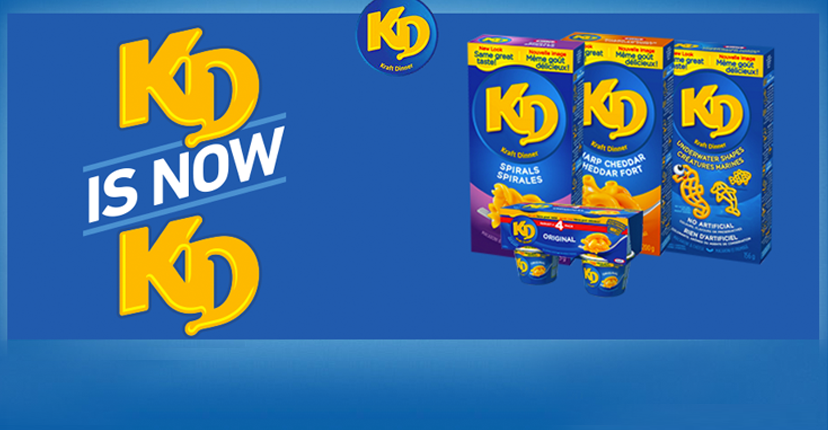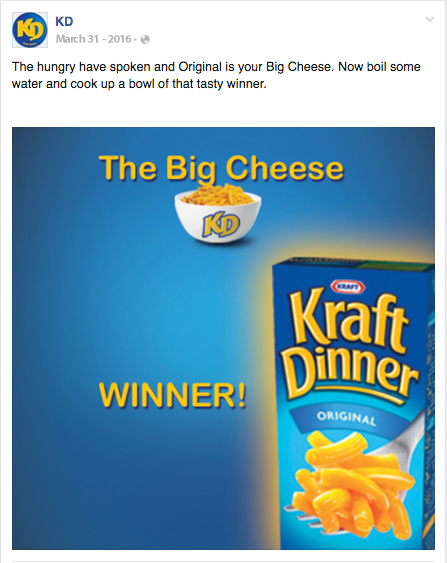Kraft Mac n’ Cheese is undoubtedly one of the star products of their brand. It originated with James Lewis Kraft, who began commercializing processed cheese products in 1916 after winning a patent for one particular processing method. In 1937, Kraft introduced Macaroni and Cheese to the U.S. and Canada.
The timing couldn’t have been better. Because of World War II, more women were working outside the home with less time to cook, a large majority of consumers didn’t have a refrigerator (especially in Canada), and rationing of milk and dairy products meant widespread reliance on meatless dinners. The ten month shelf-life, easy prep time, and cheap cost of Mac n’ Cheese made it an instant success.
At its launch, the marketing team emphasized the practicality of their product, giving it the tagline “a meal for four in nine minutes for an everyday price of 19 cents.” Since then, the product has had a brand extension, becoming an entire portfolio: from “The Original Recipe” where all the ingredients come together, to a “Deluxe” where the sauce comes in a separate can, to a ‘Homestyle” which is a variation of Deluxe sauce with different flavors like bacon, four cheese and others, to a “Kraft Easy Mac” cup for individual portions.
The success of the product was so important in Canada that a sub-brand was generated called Kraft Dinner in March 2010, which presented 2 vegetarian versions and improved the product with the inclusion of Flax Omega-3 and high fiber.
Kraft Dinner has been called the national dish of Canada. Packaged in Quebec with Canadian wheat and milk and other ingredients from Canada, Canadians purchase 1.7 million of the 7 million boxes sold globally each week and eat an average of 3.2 boxes of Kraft Dinner each year, 55% more than Americans.
The meal is the most popular grocery item in the country, where “Kraft Dinner” has iconic status and has become a generic trademark of sorts for macaroni and cheese. It is often simply referred to by the initials K.D. Because “Kraft Dinner” has a different name in Canada than in the United States and other markets, the Canadian marketing and advertising platform is a made-in-Canada effort.
K.D. by Kraft is a great example of #BRAIN_DING because they observed the market response and the acceptance of the product, increased the quantity of products and actively responded to the needs and requests of the customers.
They also has a precise tone of communication in their social networks with videos, tips and pictures to generate engagement with new and existing customers, winning some and retaining others.



You must be logged in to post a comment.